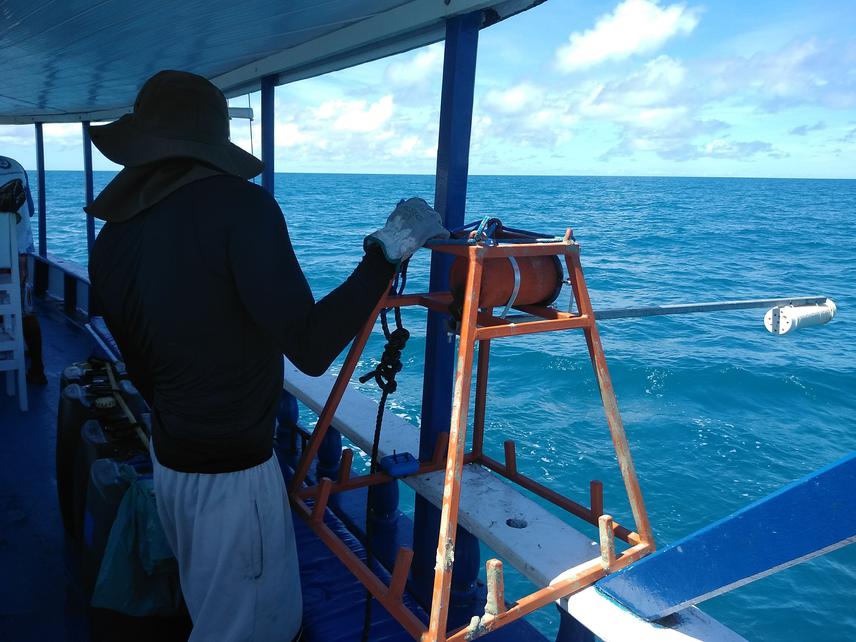Inajara Marques Bezerra Oliveira
Our study aims to model the occurrence patterns of four commercial value species of fish, indicating the occurrence sites of reproductive aggregations, characterizing and mapping the priority sites for conservation and fisheries management. Spawning aggregations are ephemeral and highly vulnerable events in the reproductive life history of some of the most commercially important tropical reef fishes. In addition, because marine fisheries focus most intensely on apex predators, such as groupers and snappers, these species are commonly reduced or absent in heavily fished systems. In this context, we will characterize the substrate and habitat topography, record environmental variables, fish abundance and structure in areas considered appropriate or with indications of aggregations occurrence, ultimately elaborating an explanatory model that defines the habitat characteristics of the studied reproductive aggregations. In doing so, we hope to provide baseline information for choosing appropriate where significant spawning habitat occurs, thus helping to stablish more sustainable practices.

Spawning aggregations of reef fishes comprise fundamental bioecological phenomena for fishery stocks renewal and reef fishes conservation, yet they have been largely declining worldwide especially due to overfishing.
Because several species of reef fishes also exhibit high commercial value, local governments have become deeply interested in identifying the most important reproductive aggregation sites. Thus, improving the current knowledge of the species occurrence patterns, habitat use, and the spatial location of spawning sites of reef fish assemblages is pivotal for proposing spatial management actions along coastal zones. So, the study area includes the entire Espírito Santos’s coast in Brazil, considered one of the largest fishing centres and harbouring a major centre of marine biodiversity in the world.
Additionally, the Bank of Abrolhos in this area, encompasses the highest marine biodiversity, and exhibit the largest and richest coral reef complex in the South Atlantic Ocean. In this context, it’s known that the South Bank of Abrolhos, has been intensively exploited by national and international commercial fishing fleets with many species exhibiting high rates of population decline due to overexploitation. So, the aim is to identify and characterize the reproductive aggregation sites of four reef fish species (red grouper Epinephelos morio, black grouper Mycteroperca bonaci) and snappers (yellowtail snapper Ocyurys chrysurus, dog snapper Lutjanus jocu) presenting high commercial interest, using both indirect indicators (CPUE Variations, mental maps, past records) and direct indicators (visual censuses, videos and spawning detection). Additionally, will be made the characterization of the substrate and habitat topography, record environmental variables, fish abundance and structure in areas considered appropriate or with indications of aggregations occurrence, ultimately elaborating an explanatory model that defines the habitat characteristics of the studied reproductive aggregations. In doing so, we intend to evaluate the current situation of fish stocks and subsequently propose sustainable management plans to safeguard the maintenance of fishery, though ensuring the long-term conservation of marine ecosystems.